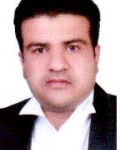| Authors | Abbas Khashei Siuki,Mostafa Yaghoubzadeh |
|---|
| Journal | Arabian Journal of Geosciences |
|---|
| Page number | 1-11 |
|---|
| Serial number | 14 |
|---|
| Volume number | 1 |
|---|
| IF | 0.955 |
|---|
| Paper Type | Full Paper |
|---|
| Published At | 2021 |
|---|
| Journal Grade | ISI |
|---|
| Journal Type | Typographic |
|---|
| Journal Country | Iran, Islamic Republic Of |
|---|
| Journal Index | JCR،Scopus |
|---|
Abstract
Groundwater is among the most important water resources around the globe. However, their contaminations are more difficult, costly, and time-consuming to detect and control than those of surface waters. Therefore, the preparation and deployment of vulnerability maps can help monitor and prevent contamination. In this study, the risk assessment of groundwater nitrate contamination was performed. For this purpose, nitrate concentration data in 130 wells in the Mashhad Plain were used to prepare the contamination mapping. Four machine learning models were used to assess the probability of groundwater contamination, including generalized linear model (GLM), boosted regression trees (BRT), and support vector machine (SVM). The validity of each model was assessed by the AUC characteristic curve. To mix the models, a minimum threshold of 80% was assumed. The results showed that the accuracy of the four models ranged from 80 to 90%, so all models were considered in the combination section. Considering the risk map of groundwater contamination due to vulnerability, contamination, and probability mapping, the western and southwestern areas of the aquifer are at high and very high risks of being exposed to nitrate contamination, which is consistent with the land use map of agricultural and urban areas. According to the results, the ensemble method can provide good efficiency.
Paper URL
